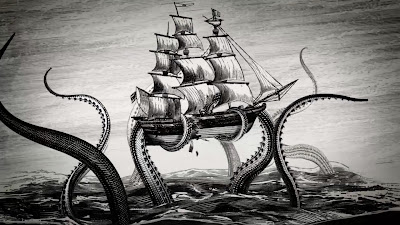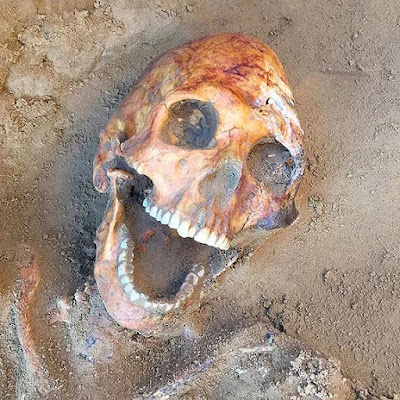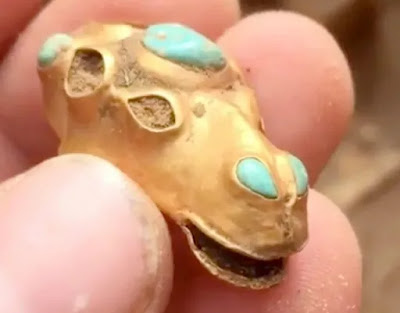Monday, June 17, 2019
Saturday, June 15, 2019
Viking coin hoard found by cops in UK
Friday, June 14, 2019
Ice Age wolf found perfectly preserved in Russian permafrost
Famous Mythological Creatures
 | Medusa was a Greek monster. She had the face of an ugly woman with snakes instead of hair; anyone who looked into her eyes was immediately turned to stone. She was a priestess of Athena, devoted to a life of celibacy; however as punishment for marrying Poseidon she was cursed. Medusa was beheaded by the hero Perseus, who used her head as a weapon until he gave it to the goddess Athena to place on her shield. In classical antiquity the image of the head of Medusa appeared in the evil-averting device known as the Gorgoneion. |  |
 | The Banshee is a spirit creature originating in Irish folklore. She is said to scream when someone is about to die. The foretelling of death was seen as both a blessing and a curse. The Bean Sidhe or Banshee haunts only the families of authentic noble stock and it is with great dread when her piercing "caoine" or keening is heard. The Banshee scream is always a death omen.  |  |
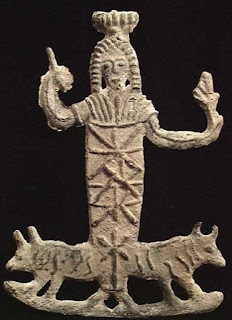 | Mermaids. In ancient Syrian folklore there was a goddess named Atargatis. She was a fertility goddess whose cult eventually spread to Greece and Rome and was associated with water. Often depicted in mermaid form, Atargatis is perhaps the “original” mermaid. A Melusine, or siren, has two tails. This creature is from medieval legend. A Melusine was a beautiful woman that transformed into a serpent from the waist down while bathing. This always resulted in calamity. |  |
Thursday, June 13, 2019
Ancient Gold
 | The ancient Egyptians believed their gods had skin made from gold. The Aztec word for gold, teocuitlatl, literally translates as “excrement of the gods.” Gold has always had a very special relationship with humans. We may find ancient views quaint, but scientists have also struggled to fully understand the origins of gold. It was a puzzle how gold came into existence in the first place. The answer only arrived in 2017 with the first ever detection of gravitational waves. Those waves were produced by the merger of two neutron stars in an event known as a kilonova. | 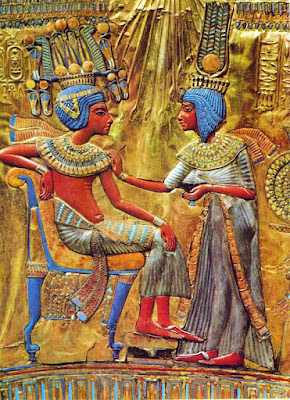 |
 | The source of the gravitational waves contained the signatures of gold and platinum in significant quantities. At long last, humans had discovered the cosmic deity capable of excreting gold. | 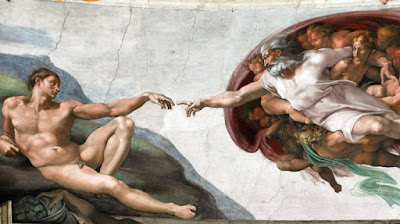 |
Friday, June 7, 2019
Roman Gold set for auction - Allectus - $700k
 | A metal detectorist found a gold coin in Kent with the image of the Roman Emperor Allectus with two kneeling captives at the feet of the god Apollo on the obverse. In power from 293 to 296 AD, Allectus was one of two Roman emperors who ruled Britannia and northern Gaul as an independent nation between 286 and 296 AD. The British Museum owns the only other known example of an Allectus aureus, and no one has discovered a coin bearing his visage in 50 years. |  |
 | A bronze antoninianus coin of Allectus is notable for the history it reflects. The coin was offered March 11 where it realized a hammer price of €550 ($618 U.S.) against a pre-sale estimate of €200 ($225 U.S.). Slender and shallow ships were used in Roman rivers until late antiquity and played a significant military role. The ship was easy to navigate and thus sailors could be trained quickly. Each carried 50 men, with 30 of them rowing. |
Thursday, June 6, 2019
The Prince of Prittlewell
 | The Museum of London Archaeology (MOLA) published a trove of new research into the find, and launched an interactive version of the burial chamber. The identity of the Prince of Prittlewell may never be known with certainty. One theory suggests the tomb belonged to Sæberht, once King of Essex, who is known to have been an early Anglo-Saxon convert to Christianity. |  Two small gold-foil crosses found at the head of the coffin were placed over the eyes of the deceased. Two small gold-foil crosses found at the head of the coffin were placed over the eyes of the deceased. |
Wednesday, June 5, 2019
Choice Tiberius aureus among Heritage offerings
 | The auction is crowned by a Mint State example of the famed Lydian ‘Light Series’ Stater, introduced under the rule of Croesus. |  |
Monday, June 3, 2019
Russian farmer unearths unusual 2,000-year-old skeleton
Sunday, June 2, 2019
Roman military victories on Rarities
 | Coins served as the messenger and message in ancient times. The Armenia Capta gold aureus of Lucius Verus, issued in A.D. 163 in Rome made 14,000 Swiss francs ($13,963 U.S.) against an estimate of 7,500 francs. In 163, the Roman general Marcus Statius Priscus invaded Armenia and captured the capital Artaxata. The second coin was issued in Rome, sometime in early 218. It features a bust of Macrinus on the obverse, and the reverse shows Victory seated. The reverse proclaims a victory over the Parthians, which is ironic, since Macrinus agreed to a humiliating peace treaty. 20,000 Swiss francs ($19,946 U.S.) against an estimate of 5,000 francs. |
Subscribe to:
Comments (Atom)






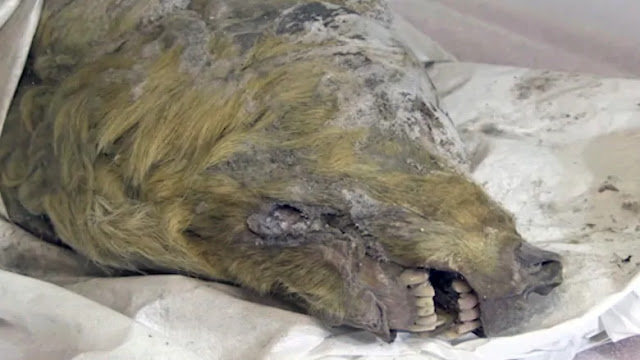 Scientists said it was an adult, about 25 per cent bigger than today's wolves.
Scientists said it was an adult, about 25 per cent bigger than today's wolves.
